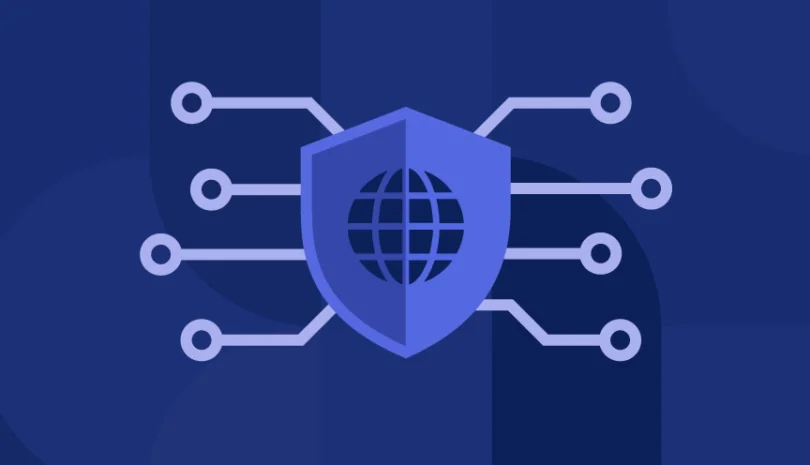Third-party vulnerabilities remain one of the most pressing cybersecurity concerns for organizations heading into 2025. With supply chains growing more complex, attackers are increasingly targeting vendors and service providers as entry points. We’ve seen a surge in supply chain attacks, the exploitation of zero-day vulnerabilities, and growing regulatory pressure through frameworks like DORA, NIS2, and updated CISA directives, all of which demand a more proactive and transparent approach to third-party risk management.
The stakes are high, and reactive security is no longer enough. Organizations need to evolve their strategies to stay ahead of threats, ensure compliance, and build digital resilience. In this article, we’ll explore forward-looking, practical strategies to mitigate third-party vulnerabilities, helping security teams not just respond to risk but anticipate and reduce it in a fast-changing threat landscape.
The Evolving Third-Party Risk Landscape
Third-party risk is no longer a niche concern; it’s a central pillar of cybersecurity strategy. High-profile breaches like MOVEit and SolarWinds have demonstrated just how damaging a single compromised vendor can be, affecting thousands of organizations downstream. As businesses continue to adopt SaaS platforms, microservices, and API-driven integrations, their digital ecosystems are growing broader and more exposed.
This shift has created an ever-expanding attack surface that traditional risk management tools struggle to monitor. Compounding the challenge is the rise of hybrid IT environments, where cloud and on-premises systems coexist. These complex architectures make it harder to maintain consistent visibility and enforce security controls across all touchpoints.
Meanwhile, global regulators are stepping in. Frameworks like DORA (EU), NIS2, and CISA’s guidelines are raising the bar for third-party oversight, requiring continuous due diligence, documented risk assessments, and rapid response to vendor-related incidents. In this evolving landscape, organizations must rethink how they assess and manage third-party cyber risk, not just annually, but continuously.
Third-Party Vulnerability Mitigation Strategy 1: Establish a Tiered Risk Classification Model
Not all third parties pose the same level of risk, and your risk management strategy should reflect that. A tiered risk classification model helps you categorize vendors based on factors like the sensitivity of data they access, their role in critical business operations, and the potential impact of a security incident.
By defining risk tiers (Critical, High, Medium, Low), organizations can apply the appropriate level of due diligence and security controls for each vendor type. For example, a critical-tier vendor with access to sensitive customer data might require continuous monitoring and regular assessments, while a low-tier vendor with no system access may only need periodic reviews.
This approach brings clarity and efficiency to third-party risk programs. It enables smarter resource allocation, establishes clear risk ownership across business units, and accelerates triage and response when issues arise, making it a foundational step in modern third-party risk mitigation.
Third-Party Vulnerability Mitigation Strategy 2: Adopt Continuous Monitoring and Threat Intelligence
Point-in-time assessments are no longer enough to manage today’s fast-moving third-party threats. Cyber risks evolve rapidly, and a vendor deemed “secure” one month may face a breach or regulatory violation the next. That’s why continuous monitoring and real-time threat intelligence are essential.
Modern risk management platforms can track a vendor’s external security posture 24/7, scanning for indicators like ransomware activity, regulatory non-compliance, data leaks, and even dark web exposure. These insights help identify emerging threats before they become business-impacting incidents.
Automated alerting and real-time scoring ensure that your risk assessments are always up to date, allowing security teams to prioritize response and remediation efforts more effectively. This proactive approach transforms third-party risk management from a static checkbox exercise into a dynamic, intelligence-driven process, ultimately strengthening your organization’s overall resilience.
Third-Party Vulnerability Mitigation Strategy 3: Standardize Third-Party Security Assessments
Consistent, structured security assessments are key to evaluating third-party risk at scale. By standardizing pre-contract and annual questionnaires, organizations can streamline due diligence while ensuring alignment with leading frameworks like NIST CSF, ISO 27001, DORA, and GDPR.
Automation plays a crucial role, enabling you to trigger assessments at key stages like onboarding and renewal, and ensuring results flow directly into your vendor management workflows. This reduces delays, eliminates manual follow-ups, and helps security and procurement teams make informed, timely decisions.
To ease the burden on vendors, consider using shared or pre-filled assessments when possible. This not only minimizes vendor fatigue but also improves response rates and data quality.
Standardizing assessments builds a repeatable, scalable process for evaluating third-party risk, helping your organization maintain compliance, reduce exposure, and keep pace with a growing ecosystem of external partners.
Third-Party Vulnerability Mitigation Strategy 4: Strengthen Contractual Risk Controls
Contracts are one of the most effective tools for managing third-party cyber risk, if they include the right clauses. Embedding security and compliance requirements into vendor agreements ensures that expectations are clear and enforceable from day one.
Key clauses to include are breach notification service-level agreements (SLAs) to guarantee timely incident reporting; the right to audit vendors’ security practices; subcontractor disclosure to prevent hidden risks; and well-defined exit and continuity plans to maintain operations during disruption or termination.
Work closely with your legal and procurement teams to ensure these provisions are standardized and consistently applied across contracts. This alignment not only strengthens your risk posture but also creates accountability, giving you leverage to enforce remediation if issues arise.
In a complex threat landscape, strong contracts act as both a shield and a roadmap, helping you navigate risk with clarity and control.
Third-Party Vulnerability Mitigation Strategy 5: Build Internal Alignment and Cross-Functional Governance
Effective third-party risk management requires more than just security tools, it demands cross-functional alignment. Third-party relationships often span multiple departments, so building governance that includes all relevant stakeholders is essential for reducing risk and ensuring accountability.
Key contributors should include IT and security teams for technical risk assessments, procurement for contract and vendor lifecycle oversight, legal and compliance to ensure regulatory alignment, and business unit owners who understand the operational impact of each vendor.
Establishing clear roles, workflows, and communication channels helps ensure that everyone, from security analysts to contract managers, has visibility into third-party risks and responsibilities. It also enables faster, more informed decision-making when issues arise.
By embedding third-party risk into your organization’s broader governance structure, you create a unified defense strategy, one that reflects both business priorities and security requirements.
Leverage AI and Automation
AI and automation are transforming third-party risk management from a reactive process into a predictive, intelligent system. By leveraging historical data and threat intelligence, AI can power predictive risk modeling, helping security teams anticipate which vendors are most likely to introduce vulnerabilities based on past incidents and behavior patterns.
AI-driven analytics also provide deeper visibility into vendor behavior, such as changes in security posture, abnormal activity, or risk signals from public sources. This allows organizations to detect emerging threats sooner and respond more effectively.
Automation complements this by streamlining workflows for issue tracking, assessment follow-ups, and remediation tasks. Instead of relying on manual effort, intelligent systems can trigger alerts, assign ownership, and escalate unresolved risks, reducing response times and increasing overall efficiency.
Together, AI and automation help organizations stay ahead of risk, improve decision-making, and scale third-party oversight in an increasingly complex digital supply chain.
Third-Party Vulnerability Mitigation Strategy Solutions
Staying ahead of third-party threats in 2025 requires more than one-time assessments or reactive controls. Organizations must adopt a layered, proactive approach. Start by establishing a tiered risk classification model to prioritize efforts, then implement continuous monitoring and threat intelligence to stay informed in real time. Standardize assessments for consistency, strengthen contractual protections, and ensure cross-functional governance to align risk ownership.
Importantly, remember that third-party vulnerability mitigation is not a set-it-and-forget-it effort, it’s an ongoing, dynamic process. As your ecosystem evolves, so must your approach.
Now is the time to conduct a third-party risk management (TPRM) maturity assessment. Identify gaps and opportunities, and begin evolving your program with automation and AI at the core. These technologies improve efficiency while delivering the intelligence needed to adapt quickly and reduce risk at scale.
Panorays helps organizations modernize TPRM with built-in automation, continuous monitoring, and AI-driven insights. Book a personalized demo to see how Panorays can support your third-party vulnerability strategy.
Third-Party Vulnerability Mitigation Strategy FAQ
-
Prioritization begins with categorizing vendors based on risk tiers, considering factors such as access to sensitive data, criticality to business operations, and potential impact of a breach. Critical and high-risk vendors should receive immediate and continuous attention, while lower-risk vendors can be monitored with less frequent assessments.
-
Reassessment frequency depends on the vendor’s risk tier and the regulatory environment. High-risk vendors typically require ongoing monitoring and formal reassessments at least annually or upon significant changes. Medium- and low-risk vendors may be reassessed annually or biennially, supplemented with continuous monitoring to catch emerging threats.
-
If a vendor is unwilling or unable to remediate critical vulnerabilities, organizations should escalate the issue internally and engage legal or procurement teams to enforce contractual obligations. In some cases, termination of the relationship may be necessary to protect the organization’s security posture and compliance standing.



